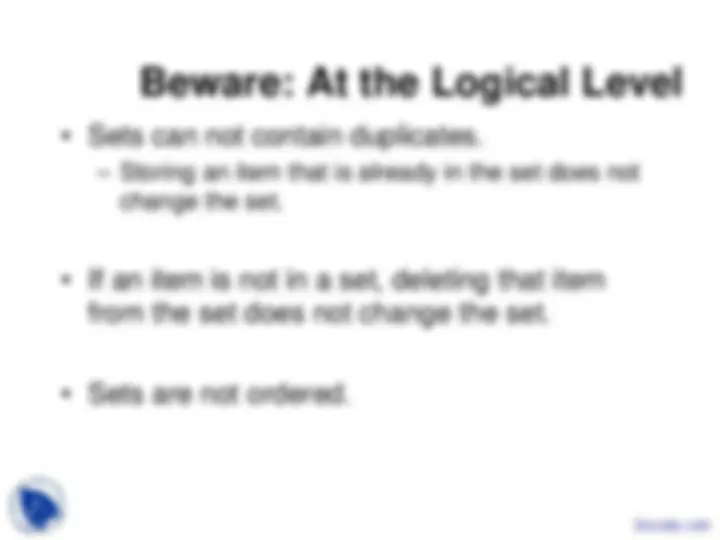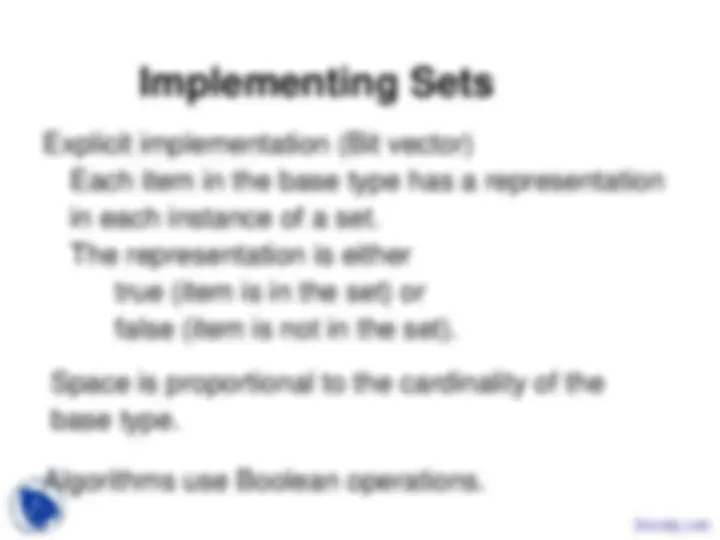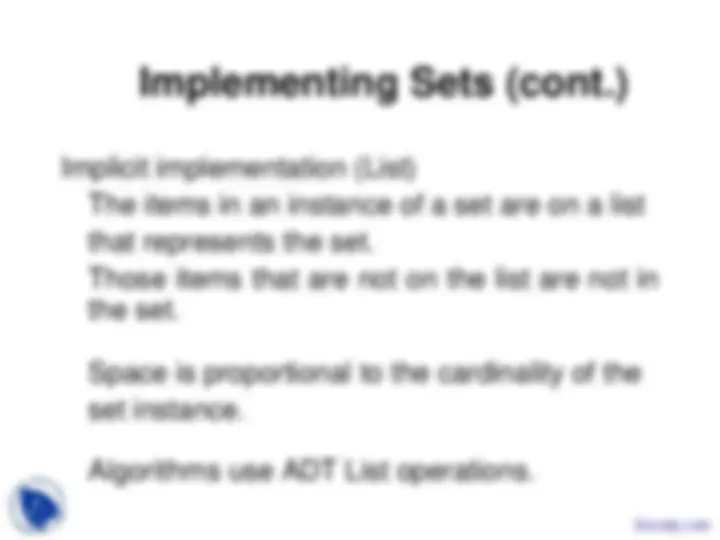





Study with the several resources on Docsity

Earn points by helping other students or get them with a premium plan


Prepare for your exams
Study with the several resources on Docsity

Earn points to download
Earn points by helping other students or get them with a premium plan
Community
Ask the community for help and clear up your study doubts
Discover the best universities in your country according to Docsity users
Free resources
Download our free guides on studying techniques, anxiety management strategies, and thesis advice from Docsity tutors
The concepts of sets, including base types, cardinality, set operations, and their logical and implementation aspects. The definitions of sets, their properties, and the two common ways to implement sets: explicit (bit vector) and implicit (list). It also discusses why using a sortedlist adt for the implicit representation is a better choice, despite sets being inherently unordered.
Typology: Slides
1 / 6

This page cannot be seen from the preview
Don't miss anything!




Chapter 9 Sets
Base type: The type of the items in the set
Cardinality : The number of items in a set
Cardinality of the base type : The number of items in the base type
Union of two sets: A set made up of all the items in either sets
Intersection of two sets : A set made up of all the items in both sets
Difference of two sets : A set made up of all the items in the first set that are not in the second set